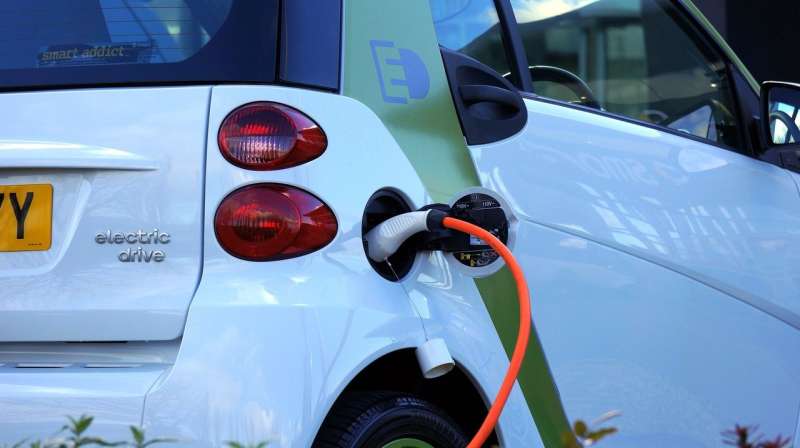This article has been reviewed according to Science X's editorial process and policies. Editors have highlighted the following attributes while ensuring the content's credibility:
fact-checked
trusted source
proofread
'Are we there yet?' Driving Australia toward an EV future

University of Queensland researchers have outlined five key steps needed to speed up Australia's transition to electric vehicles (EVs).
The Federal Government recently passed the New Vehicle Efficiency Standard (NVES) requiring car makers to reduce carbon emissions for new vehicles from January 2025.
Dr. Kai Li Lim, Dr. Dia Adhikari Smith and Associate Professor Archie Chapman said the legislation was an important step toward sustainable transport, incentivizing car manufacturers to export their most fuel-efficient vehicles to Australia.
The researchers said five further measures would put Australia on the road to an EV future:
1. Improve charging infrastructure
"We advocate for the continued implementation of the National EV Strategy, focusing on EV charging infrastructure to ensure comprehensive coverage across urban, regional and remote areas," Dr. Adhikari Smith said. "This includes accelerating the building of heavy EV charging infrastructure like fast-charging stations for trucks and buses."
Dr. Lim said public charging infrastructure for passenger EVs needs to be more reliable and built with longevity in mind: "Chargers also need to be as accessible as possible, including retrofitting existing commercial and residential buildings."
2. Enable EVs to supply energy back to the grid
"EVs can act as mobile energy storage units, giving owners the opportunity to monetize their vehicles through demand response programs," Dr. Chapman said. "Light and heavy EVs should be enabled and encouraged to supply energy back to the grid, lowering energy costs for consumers and reducing greenhouse gas emissions."
3. Create local supply chains for EV batteries and parts
"Establishing local battery and part manufacturing and recycling would leverage Australia's mineral resources," Dr. Adhikari Smith said. "Local supply chains, including for imports, would stimulate the electrification of commercial vehicles and heavy machinery."
4. Upskill an EV sector workforce
"There will be high demand for a workforce in all parts of the EV sector, including maintaining vehicles and chargers, building chargers and charging sites and developing software," Dr. Lim said. "This will require setting up specialized courses to satisfy skill demands and presents opportunity for Australia in the automotive value chain.
"Workers in the internal combustion engine vehicle sector should be supported with transition programs, and ideally be provided with pathways toward EV manufacturing and services."
5. Replace fuel excise revenue
"A fair road user charge for EVs will eventually be needed to replace the loss of fuel excise revenue in Australia, and to continue recouping road costs equitably," Dr. Lim said. "This could be a phased approach, with no road charges for EVs initially to encourage adoption before a user-pay system is introduced, based on the distance driven."
The road ahead
The researchers said announcements in the recent federal budget including the NVES, investment in integrating EVs with the grid and local battery manufacturing provide hope for accelerating Australia's transition to an EV future.
"We can also expect an influx of EVs into the country thanks in part to policies overseas, so it's imperative Australia—and our infrastructure—is ready," Dr. Lim said. "The transition to EVs will require both strategic investment and careful thinking, as charging technology and charging behavior continue to evolve."
"This is challenging but vital work that requires a collaborative effort across technology adoption, policy formulation, financial mechanisms and workforce development," Dr. Adhikari Smith said. "Australia has a unique opportunity to devise a framework to support the uptake of EVs that will benefit consumers, maintain our transport capabilities and reach environmental goals."
The recommendations formed part of a submission by UQ researchers in response to an inquiry into the transition to EVs by the Federal Parliament House Standing Committee on Climate Change, Energy, Environment and Water in early 2024.

















